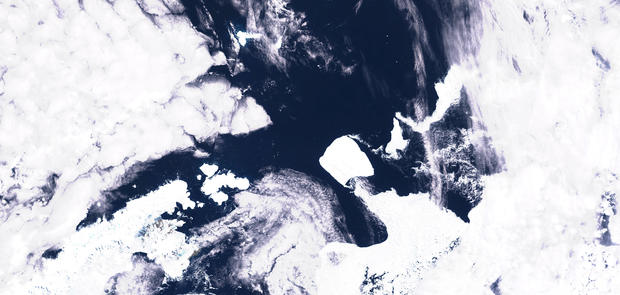The Earth’s largest iceberg, a behemoth three times the size of New York City, is now in motion for the first time in 37 years.
The world’s largest iceberg, approximately three times the size of New York City, has recently resumed its movement after being lodged on the ocean floor for 37 years, as confirmed by scientists on Friday.
Recent satellite observations reveal that the iceberg, named A23a, is currently advancing past the northern edge of the Antarctic Peninsula and is progressing towards the Southern Ocean, according to the British Antarctic Survey.

Originally breaking away from the Antarctic coastline in 1986, the iceberg had become stranded in the Weddell Sea, as reported by the BBC. The iceberg spans an area of nearly 4,000 square kilometers (about 1,500 square miles).
On Friday, the British Antarctic Survey shared a time-lapse of satellite imagery, showcasing the iceberg’s movement and documenting its journey out of the Weddell Sea after being grounded on the ocean floor following its calving in August 1986.
Prior to its calving in 1986, the massive iceberg housed a Soviet research station. The reason behind the sudden movement of the iceberg, 37 years later, remains unclear.
“I consulted with a few colleagues to explore the possibility of any changes in shelf water temperatures that could have triggered this event, but the general consensus is that it was simply the natural progression,” explained Dr. Andrew Fleming, a remote sensing expert from the British Antarctic Survey, in an interview with the BBC. “It had been grounded since 1986, but over time, it was inevitable that it would diminish in size enough to lose its grip and begin to drift.”
A23a is expected to be propelled into the Antarctic Circumpolar Current, leading it along a route referred to as “iceberg alley,” according to the BBC. Interestingly, this current mirrors the path taken by the renowned explorer Ernest Shackleton in 1916 during his remarkable escape from Antarctica after the loss of his ship, the Endurance. The discovery of the iconic shipwreck occurred just last year off the coast of Antarctica.
A23a’s displacement occurs approximately 10 months following the detachment of a substantial portion of Antarctica’s Brunt Ice Shelf, equivalent in size to two New York Cities. Positioned across the Weddell Sea from the Larsen C ice shelf on the Antarctic Peninsula, the Brunt Ice Shelf recently experienced this rupture. Notably, the Larsen C ice shelf, previously deemed stable and comparable in size to New York City, underwent a collapse into the sea last year.